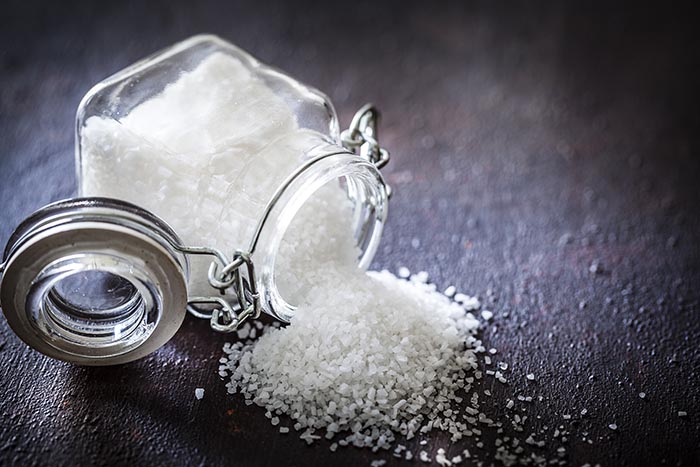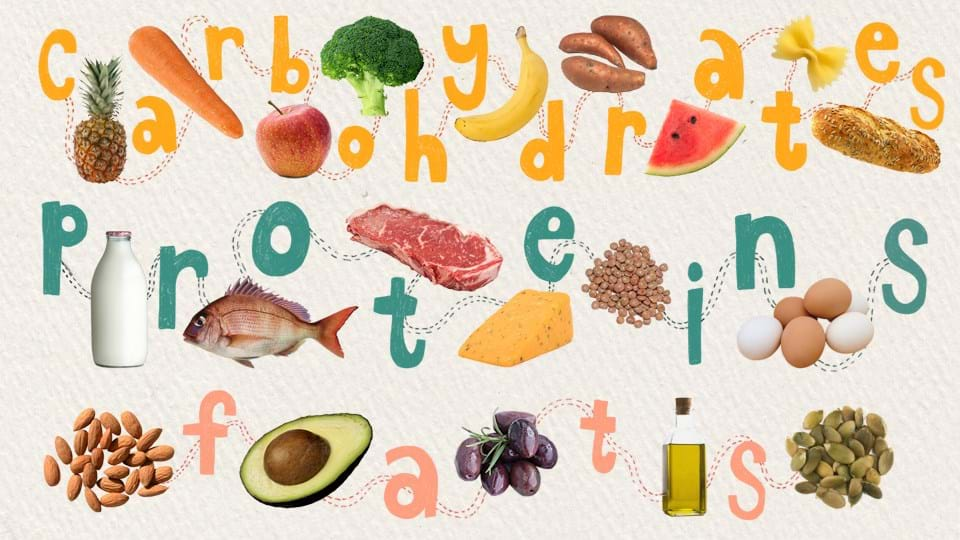
Well-balanced meals are essential for losing weight. Avoiding overeating is the key. It is possible to avoid overeating by planning ahead, making your meals at the beginning of the day and then storing them in the fridge. You can also skip candy bars and opt for a cheesestick. You can also consume plenty of water, or fruit smoothies. This will make it much easier to get through your day. These are some tips to lose weight.
You must plan your meals if you want to lose weight. By planning what you will eat before dinner, this can help you lose weight. Avoiding meals can lead to overeating later. Plan your meals ahead of time to avoid this. If you can't, order delivery. If you don't have time to plan ahead, it is a good idea to do so. It will result in a satisfying, healthy meal.

Healthy eating habits will help you lose weight and feel healthier. Reduce your sugar intake. You should limit your intake of sweet and oily foods. You can substitute them with more water. Aim to drink two to three liters of fluid per day. These tips will make healthy eating easy. Remember to stay hydrated! It's important to drink plenty of water every day! There are many ways to lose weight or improve your health.
It is possible to avoid eating too much and have more energy by planning ahead. It can also help to reduce stress. For example, if a meal is skipped, it may lead to eating more later. Don't forget to eat a proper meal. It can lead you to overeating later on. Order a delivery if your schedule is too hectic.
It is possible to plan meals and eat healthier by understanding the nutritional information contained on food labels. You can learn how much calories are in a food and calculate how much you should eat in a day. If you don't know what healthy food is, it can be hard to eat healthy food. You can use this information as a guide to help you choose healthy foods and make nutritious meals. This will also help you track your portion sizes.

To live a healthy lifestyle, you must adopt healthier eating habits. You can make small changes to your eating habits and eventually you will see lasting improvements. It is important to be focused on healthier eating and reap the rewards. One habit can make a huge difference in your entire life. By changing your diet, you will be able to control your weight and improve your relationships.
FAQ
What should you eat while intermittent fasting?
The best way to lose weight is to cut out carbs. This means eliminating carbohydrate-based foods such as pasta, bread, rice, potatoes, or other carbohydrate food.
It is important to eat less protein, as it will keep you fuller longer. You won't feel as hungry.
Focus on foods rich in healthy fats like olive oil, avocado, nuts and seeds. These foods will keep you full for hours after you eat them.
It's important to make sure you're drinking plenty of water, too. Water helps you stay hydrated, which makes it easier to burn fat.
Sometimes you may feel compelled to eat these foods even if you're not fasting. You don't have to cave to your cravings. You might gain more weight if you do.
Keep an eye on the amount of food you eat throughout the day to avoid overeating. Drink a glass water whenever you feel hungry.
It may sound counterintuitive but this has been shown to help you lose weight. A study published online in Obesity revealed that people drank more plain water than they did sugary drinks.
In addition, drinking plain water helped reduce feelings of hunger. Drinking water is the best way to lose weight if you don't want sweetened beverages.
You don't have to eat every calorie or avoid certain foods if you are trying to lose weight. Instead, you should make small lifestyle changes.
One way to start is by substituting your typical breakfast sandwich with a bowl of oatmeal. Consider swapping out your afternoon cookie in favor of a piece if fruit.
These simple changes will help you shed weight quickly and without spending a lot of time in the kitchen.
How to Make an Exercise Plan?
First, create a routine. You need to know what you will do each day and how long you will spend doing it. This helps you plan and prevents procrastination.
A second important thing to do is ensure you have lots of variety when it comes to your exercise routine. Exercise shouldn't be boring. Otherwise, you'll lose motivation.
You also need to keep track of your progress. It's important that you keep track of the weight you have gained or lost over time.
It's easy for people to lose motivation when they start by losing weight. If you gain excessive weight, it can be difficult to remain motivated.
So, try to find a balance between gaining weight and losing weight. You'll find it harder to exercise if you don't like where you are at the moment.
What can I drink in the morning while intermittent fasting?
Drink water before you go to bed at night. This will make you feel fuller and give you energy all day. For more flavor, add lemon juice and cucumber slices.
How often do people fast?
A majority of ketogenic dieters fast one week. But, some people fast twice per week. And others fast three times per week.
There is a variation in the length of fasts. Some people fast for 24 or 48 hours, while others go for 48.
Some people may even stay awake for 72 hours. But, such extreme cases are rare.
What is the difference between intermittent fasting or calorie restriction?
Calorie restriction can be defined as eating less than your body needs. Intermittentfasting is different as it doesn’t require you to restrict your calories. Rather, it focuses on eating fewer calories throughout the day.
Intermittent fasting works better because it allows for you to enjoy your favorite foods without feeling guilty.
However, both methods have their pros and cons. Decide which one you prefer.
What Amount Of Exercise Is Needed For Weight Loss?
The amount of exercise needed for weight loss depends on several factors, including age, gender, body type, and how much you weigh. Most people require moderate activity at least five days per week.
The American College of Sports Medicine recommends 150-minutes of moderately intense aerobic activity every week. It should be spread over three separate days.
For example, if you want to lose 10 pounds, aim to do 300 minutes of moderate-intensity exercise each week. You can do this by walking fast, swimming laps or biking, as well as playing tennis, golfing and hiking, or jogging, running or other similar activities.
For those just starting out, you might consider 20 minutes of vigorous activity every other week. This could be lifting weights, sprinting, jumping rope, and fast walking.
Aerobic exercise is a great way to burn calories and build muscle mass. Muscle burns more calories than fat does. So building muscle can help you lose weight faster.
What foods help me lose more weight?
Consuming fewer calories is a great way to lose weight quickly. You have two options:
-
Reduce the number of calories you take in daily.
-
You can burn more calories through exercise.
It is easy to reduce calories. It's no surprise that we are constantly bombarded with high-calorie fast food options. Here's a list to help you shed those extra kilos.
-
Beans are rich in fiber and protein. They contain almost no fat, making them an ideal choice for dieters who want to reduce their caloric intake.
-
Oatmeal, while low in calories, is high in nutrients like potassium and magnesium. Oatmeal has less sugar than other cereals.
-
Eggs are high on cholesterol and protein. Consuming eggs at least once a week can increase your metabolism and help you burn more calories.
-
Whole grain bread may help you feel fuller, longer.
-
Dark chocolate is rich in antioxidants and flavonoids. These substances have been shown to improve heart health and lower blood pressure.
-
Cottage cheese is high in calcium, which helps to build strong bones. It also provides a good source of vitamin D, which boosts immunity.
-
Salmon is high in omega-3 fatty oils, which are good for brain development and heart health.
-
Green tea is chock-full of catechins, compounds that fight cancer and increase metabolism.
-
Broccoli has a lot of folic, which can lower homocysteine in the blood. Homocysteine levels that are high have been linked to increased risks of heart disease and stroke.
-
Yogurt is an excellent way to include probiotics in your diet without adding sugars. Probiotics are essential for digestive health.
-
Berries are a delicious snack option that's also very nutritious. There are many great sources of vitamins, minerals in blueberries, strawberries, blackberries and raspberries.
-
Avocados are full of healthy fats. A half avocado has only 80 calories and offers plenty of filling fiber and potassium.
-
Nuts can be enjoyed as a snack, but they are also rich in protein. You can choose from cashews or hazelnuts, almonds, walnuts or pecans.
-
Sweet potatoes are another starchy crop that is rich in beta carotene. This makes your skin glow. Orange sweet potatoes have a higher amount of beta carotene that regular sweet potatoes.
Statistics
- One 6-month study showed that simply doing 11 minutes of strength-based exercises 3 times per week resulted in a 7.4% increase in metabolic rate, on average. (healthline.com)
- One study in 9 active men found that HIIT burned 25–30% more calories per minute than other types of exercises, including weight training, cycling, and running on a treadmill (18Trusted Source (healthline.com)
- According to a study sponsored by the American Council on Exercise, a person weighing around 140 pounds (64 kg) would burn 108 calories at a 30-minute beginner's Pilates class or 168 calories at an advanced class of the same duration (26). (healthline.com)
- According to Harvard Health, it's estimated that a 155-pound (70-kg) person burns roughly 112 calories per 30 minutes of weight training (5). (healthline.com)
External Links
How To
How to do Intermittent Fasting (IF)
Intermittent fasting is a dieting method where you normally eat one day per week, usually Monday through Friday. The goal is to decrease your overall calories and still get adequate nutrition. This will allow you to burn fat more quickly than eating regular meals throughout the week.
The most popular form of IF is to limit calories to certain days. This would mean that you skip breakfast each morning, and then eat whatever food you like throughout the day. It is possible to choose to have three smaller meals each day, rather than two large.
Many forms of intermittent fasting are available, such as alternate day fasting (5/2 fasts), 8/4 fasts and 16/8 fasts. There are pros as well as cons to each form of intermittent fasting. Alternate-day fasting is the easiest method to get started because it doesn't require any significant lifestyle changes. However, some people find it difficult to stick to a strict schedule like this, so they might prefer to try other methods first.
If you're looking to start an intermittent fasting routine, I recommend starting with alternate-day fasting. This will allow for gradual transition to more extreme fasting without having to change your lifestyle.